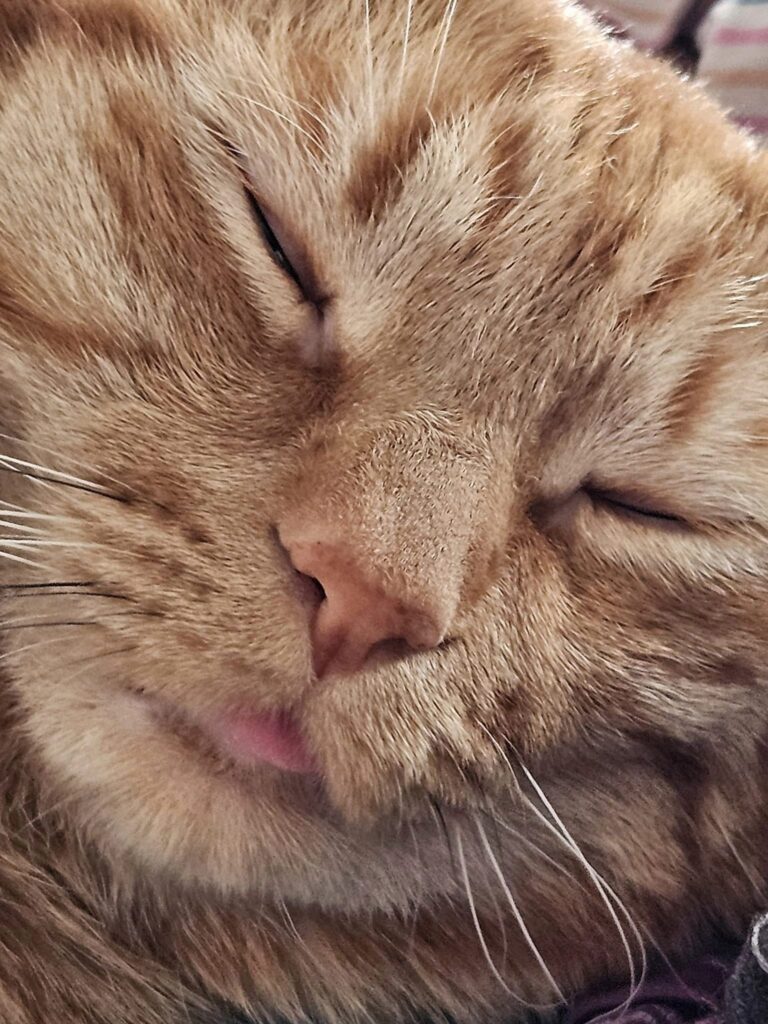6 Essential Tips for Taking Care of Orange Tabbies
Orange tabbies, with their vibrant coats and endearing personalities, have captured the hearts of cat enthusiasts worldwide. Also known as marmalade cats or ginger cats, these felines aren’t a distinct breed but are identified by their distinctive orange color and tabby patterns. Ensuring their health and happiness involves understanding their unique traits and providing tailored care. This comprehensive guide offers six essential tips for caring for your orange tabby, along with answers to frequently asked questions about these charismatic cats.

Understanding Orange Tabbies
Orange tabbies are beloved for their warm-toned coats and striking tabby patterns, which can be categorized into four distinct types:
- Classic Tabby: Swirled patterns resembling marble.
- Mackerel Tabby: Narrow, vertical stripes similar to fishbones.
- Spotted Tabby: Leopard-like spots across their coat.
- Ticked Tabby: Flecks that create a salt-and-pepper effect.
These cats are not exclusive to one breed. You’ll find orange tabbies among Maine Coons, British Shorthairs, Persians, and domestic short-haired cats. Remarkably, about 80% of orange tabbies are male due to the genetic mechanics behind their coat color, adding to their uniqueness.
Tip 1: Provide a Balanced Diet
A nutritious diet is fundamental to your orange tabby’s health, influencing everything from their coat’s vibrancy to their overall vitality.
Guidelines for a Balanced Diet:
- High-Quality Protein: Opt for cat food with meat or fish as the primary ingredient to support muscle health and energy.
- Essential Nutrients: Include foods rich in taurine, omega-3 fatty acids, and vitamins to promote coat health and prevent deficiencies.
- Portion Control: To avoid obesity, adhere to feeding recommendations based on your cat’s age, weight, and level of activity.
Foods to Avoid:
Certain foods are toxic to cats, including chocolate, onions, garlic, grapes, and raw fish. Before giving your pet new foods, always get their opinion.
Pro Tip: Treats can be a delightful addition to their diet but should constitute no more than 10% of their daily caloric intake. Look for healthy options, such as freeze-dried meat treats, to reward your feline friend.
Tip 2: Grooming for a Shiny Coat
The orange tabby’s stunning coat deserves regular grooming to maintain its beauty and reduce shedding.
Grooming Routine:
- Brushing: Weekly brushing helps remove loose hair and prevents matting, especially for long-haired orange tabbies like Maine Coons.
- Bathing: While cats are excellent self-groomers, occasional baths with cat-safe shampoo can help keep their coat clean and fresh.
- Nail Trimming: Trim their nails every 2-3 weeks to prevent overgrowth and minimize the risk of scratches.
Regular grooming sessions also provide an opportunity to check for fleas, ticks, or skin issues, ensuring your orange tabby stays healthy and comfortable.
Tip 3: Schedule Regular Veterinary Check-Ups
Preventative care is essential to detect and address health issues early, ensuring your orange tabby enjoys a long and healthy life.
Key Health Checkups:
- Vaccinations: Protect your cat from common diseases like feline distemper and rabies.
- Dental Care: Dental issues are prevalent among cats. Regular vet visits and dental cleanings can prevent gum disease and tooth decay.
- Weight Monitoring: Maintain a healthy weight to avoid obesity-related conditions such as diabetes and joint problems.
If your orange tabby displays unusual behaviors, such as changes in appetite, excessive grooming, or lethargy, seek veterinary advice promptly.
Tip 4: Keep Them Mentally and Physically Active
Orange tabbies are known for their playful and intelligent nature, making mental and physical stimulation crucial to their well-being.
Activities to Engage Them:
- Interactive Toys: Puzzle feeders, laser pointers, and wand toys stimulate their hunting instincts and provide hours of entertainment.
- Climbing Opportunities: Cat trees, shelves, and window perches cater to their love for climbing and exploring.
- Dedicated Playtime: Spend 15-20 minutes daily engaging in interactive play to strengthen your bond and keep them active.
Rotating toys regularly keeps them excited and prevents boredom, fostering their mental and physical health.
Tip 5: Create a Safe and Comfortable Environment
Cats do best in settings that make them feel safe and happy. Providing a safe, comfortable space ensures their happiness.
Essentials for Their Living Space:
- Cozy Bedding: Offer a soft bed or blanket for them to nap on.
- Scratching Posts: Satisfy their natural scratching instincts while protecting your furniture.
- Clean Litter Box: Keep their litter box clean and in a quiet, easily accessible location.
- Windows and Perches: Allow them to observe the outside world, which provides mental stimulation.
Adding cat-safe plants or an indoor garden can further enhance their living space, offering sensory enrichment for your curious orange tabby.
Tip 6: Show Them Love and Attention
Orange tabbies are often associated with affectionate and social behavior. Building a strong emotional connection with your cat is essential for their happiness.
Signs Your Cat Feels Loved:
- Purring: Indicates contentment and comfort.
- Kneading: A behavior that signifies trust and affection.
- Following You: Demonstrates loyalty and attachment.
Respect their boundaries, as some cats may prefer affection on their terms. Spend quality time together through gentle petting, play, or simply sharing quiet moments.
FAQs About Orange Tabbies
1. Are orange tabbies always friendly?
While many orange tabbies are sociable and affectionate, individual personalities vary depending on their genetics and upbringing. Early socialization plays a significant role in their behavior.
2. Do orange tabbies require special care?
Orange tabbies don’t require special care beyond what is needed for other cats. However, regular grooming, a balanced diet, and routine veterinary visits are essential to their health and well-being.
3. Why are most orange tabbies male?
The gene responsible for orange fur is linked to the X chromosome. Male cats, having only one X chromosome, need just one copy of the gene to display the orange color, making them more common than females.
4. What breeds can have orange tabbies?
Breeds such as Maine Coons, Persians, Abyssinians, and domestic short-haired cats can all feature orange tabby patterns.
5. How long do orange tabbies live?
With proper care, orange tabbies can live 12–15 years or longer. Factors such as diet, exercise, and regular vet visits significantly impact their lifespan.
Final Thoughts
Orange tabbies, with their stunning coats and warm personalities, are a delightful addition to any home. By following these six essential tips, you can ensure your orange tabby lives a healthy, happy, and fulfilling life. Whether you call them marmalade cats or ginger cats, one thing is certain—these felines are more than just pets; they’re cherished members of the family.
Cherish every moment with your orange tabby. Their unique charm and loving nature make them truly one of a kind.


